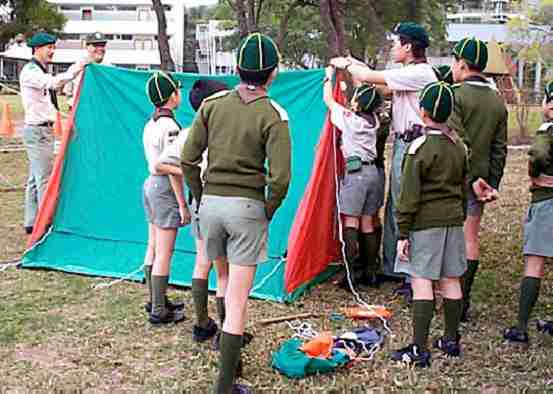
Figure 1.--Many Cub groups around the world, like these Hong Kong Cubs, adopted the grennand yellow peaked English Wolf Cub caps. |

|
The peaked school cap was adopted by the flegling British Wolf Cub movement in 1916. Virtually every other national Cub group also adopted it, including U.S. Cubs in 1930. Usually Cub groups retained the green color with yellow piping as used by the British wolf cubs. In a few instances the color varied. Blue with yellow piping was chosen for American cubs. Many Cub groups have now adopted different caps, but a few countries retain the traditional English peaked caps.
The peaked school cap was adopted by the flegling British Wolf Cub movement in 1916. It was at the time a popular style for boys and almost universally worn by English school boys. It was also common in America and sometimes seen in France. I don't have any setails on just why it was chosen by Baden Powell and the British Cubs and what other optiins they considered. At the time it did not have the image of being for littke boys as school boys wore it into ther teens. It also had a sporting image, being the style worn by cricket players.
The peaked cap proved a very popular choice for the Wolf Cubs. Virtually every other national Cub group also adopted it, including U.S. Cubs in 1930. The peaked cap remained the standard Cub cap into the the 1960s. Some European Cubs switched to berets in the 1960s, but the peaked cap with probably always be assocaited with Cubbing. After the U.S. Cubs switched to baseball caps in 1980, the popularity of the peaked cap has been on decline.
British Wolf Cubbing was begun in 1916 as many younger boys began tagging along with their brothers. I'm not sure that the green and yellow peaked cap was chosen for the British Wolf Cubs at the beginning, but if not it was soon after. This style was adopted almost immeduately throughout Europe by already established Scout groups who proceeded to establish their own Cub groups. HBC at this time does not have the precise dates that this occurred, but believe that it mostly ocurred in different countries after World War I (1914-18) in the 1920s. The United States was one of the last countries to establish a Cubing program, but when they did in 1930, they chose the English styled peaked cap--only in blue to match the blur Cub uniform. The peaked cap contuinued to be the standard Cub headgear until well after World War II (1939-45). Some European Cubs began wearing berets in the 1960s. The big switch occurred in 1980 when American Cubs began wearing baseball caps. Cubs in several other countries still continue wearing the traditional Cub caps.
|
Many cap and hat styles were worn by various youth groups. Only a few groups had a estinctive headwear that was only worn by their group. The English peaked school cap was only aopted by one organization, Scouting cubs. It was adopted almost universally by Cubs around the world, but to HBC's knowledge. only Cubs wore them. The peaked cap, often in the British Cub colors of green and yellow. The peaked cap was commonly worn by Cubs around the world through the 1970s. Only in the 1980s did new caps for Cubs begin to appear.
The peaked school cap was adopted by English Cubs when the Cub program was created. They used a familr style, the same cap that most school boys were using, but in a destinctive green color with yellow piping. The Cub cap came to be a widely recognized symbol of Cubbing thrughout Britain. Most Cub groups when they were set up around the world initially wore the traditional British peaked caps. They also adopted the same colors, green with yellow piping. Here the one excetion was America which adopted the cap design but used blue with yellow piping. Cubs around the world. They countinued to wear these caps for decades, well after World War II. Many Cub groups have now adopted different caps, but a few countries retain the traditional English peaked caps. Cubs in Belgium, England, Italy, and Hong Kong still wear them. American (1980) and Australian (199?) Cubs have adopted new styles. British Cubs in the 1990s discontinued the tradition cap, but did not adopt a new cap.
Usually Cub groups retained the green color with yellow piping as used by the British wolf cubs. In a few instances the color varied. Most countries reyained the traditiional green color with yellow piping. Blue with yellow piping was chosen for American cubs. Japanese Cubs also wore blue caps.
Navigate the Historic Boys' Uniform Web Site:
[Return to the main Scout hat page]
[Activities]
[Biographies]
[Chronologies]
[Countries]
[Essays]
[Garments]
[Organizations]
[Religion]
[Other]
[Introduction]
[Bibliographies]
[Contributions]
[FAQs]
[Questions]
[Unknown images]
[Boys' Uniform Home]
Navigate the Historic Boys' Uniform Web chronological pages:
[1900s]
[1910s]
[1920s]
[1930s]
[1940s]
[1950s]
[1960s]
[1970s]
[1980s]
[1990s]
